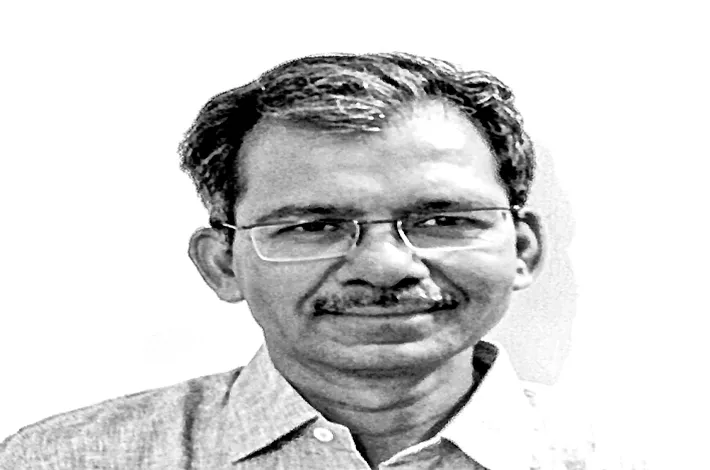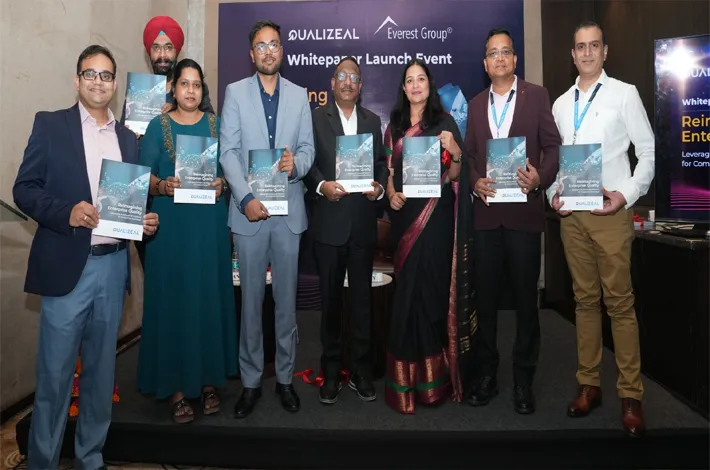Snapshot of the state of higher education institutes in India
19-11-2025 12:00:00 AM

The 100 top-ranked institutions in the overall category are regionally distributed thus: South and North 35% each, West 19%, and East 11%
In the previous article (Oct 18,), I had briefly discussed the basic framework of NIRF 2025 and my assessment of this framework. Here I sum up the processes of data collection and analysis and some of its findings.
A total of 8863 institutions registered to participate in the rankings, and finally, 7692 institutions submitted their data in different categories and subject domains. Since one institution could submit data in more than one category, a total of 14,163 applications were received for ranking, and out of these, the overall (4045), colleges (4030), engineering (1584) and management (1026) were the largest categories. Region-wise participation of institutions was as follows: South (5268), West (4702), North (2304) and East (1889).
The Data Capturing System, Feedback System, and Perception Capturing System were developed for online capturing of data from applicant institutions and feedback from public and institutional perception (from peers and employers). The data on publications, citations and highly cited publications were retrieved directly from third-party sources.
Committees of academic experts examined the data submitted by institutions under each of the five broad categories and other parameters. When it was felt necessary, institutions were contacted to confirm the data, the correct data and the support data with documentary evidence. For this purpose, each institution was asked to nominate one senior functionary as a nodal officer for dealing with NIRF concerns.
All applicant institutions with more than 500 published research papers in peer-reviewed journals or with at least 1000 students pursuing PhDs were ranked in the research institutions category.
Following is the summary of findings of the NIRF Report, 2025, with a focus on the overall category: a core category for India rankings. (All institutes, irrespective of discipline or category, are considered eligible for a common overall rank if they have at least 1,000 enrolled students or are centrally funded or are a university.) There were 4045 applicants under this category with region-wise distribution as follows: South (1452), West (1417), North (602) and East (574).
In this category, across institutions, 346,671 teachers are employed in Higher Education Institutions (HEIs). Out of these, nearly 60% hold a PhD degree, while others hold a master’s degree. It was also observed that the faculty with PhDs were concentrated in the top 100 institutions: from 64% in colleges to almost 95% in management institutions. Among others, 30% of faculty in pharmacy institutions and 70% in universities had acquired a PhD.
In the overall category, almost 35% of all faculty have a teaching experience of less than 8 years, 30% have teaching experience between 8 and 15 years, and around 36% have more than 15 years of teaching experience compared to almost 33% in each group in the previous report, indicating an increase in recruitment in recent years. About 23% of institutions have more than 50% of their faculty with experience up to 8 years, while about 55% of institutions have faculty with a good blend of experience. However, only about 39% of institutions (685) have the required faculty-student ratio of 1 to 20. In fact, about 28% of institutions have the faculty-student ratio ranging from 30 to 50.
As for research publications, research institutions (total 229) show the highest average publications per institute at 5275, with nearly 58% of total publications coming from the 50 top-ranked institutions, indicating a strong culture of research in these institutions. Similarly, the top-ranked 100 institutions in the overall category and universities also have a high average of 3459 and 2506 publications in the three years from 2021 to 2023. Management and pharmacy show similar concentrations of research in the 100 top-ranked institutions. Among colleges, 36% of all publications come from the 100 top-ranked colleges, and 64% come from the remaining 1721 colleges.
At the other extreme, there are many institutions with zero publications—in the management category, almost 58% of all institutions reported no publication at all, and among colleges, almost 32% had no publication, indicating a widespread lack of research engagement by the faculty. Among pharmacy institutions, 16% had no publications, and among engineering institutions, only 6% had zero publications. In the overall category, about 8% of institutions did not contribute to any publication.
In the overall category, a total of 112829 students received PhDs during the academic years 2021-22, 2022-23, and 2023-24, with a gradual increase in the number from year to year. As for regional diversity, while almost 74% of all students in the overall category were enrolled from within the state, about 25% of students came from other states, and less than 1% (55,521) were from other countries. Out of a total of almost 57 lakh students, 55% were male, and the rest were female students. Among the faculty, there were 57% male and 43% female teachers.
Among peer and employer perceptions, the overall category of institutions has the highest vote shares of above 20% for each, followed by engineering, research institutions, colleges, management institutions, and medical colleges. Other categories, like law, architecture, dental, and others, have very low recognition among both peers and employers.
The 100 top-ranked institutions in the overall category are regionally distributed as follows: South and North regions (35% each), West (19%), and East (11%). In this category, IITs dominate the top ranks from 1 to 7, except for the Indian Institute of Science at No. 2. AIIMS, Delhi, is at No. 8. The Jawaharlal Nehru University is ranked at No. 9, followed by the Banaras Hindu University at No. 10.
This, then, is a snapshot of the state of HEIs in India. For detailed data and rankings for institutions in other specialised disciplines and other categories, one would benefit from accessing the NIRF website.








